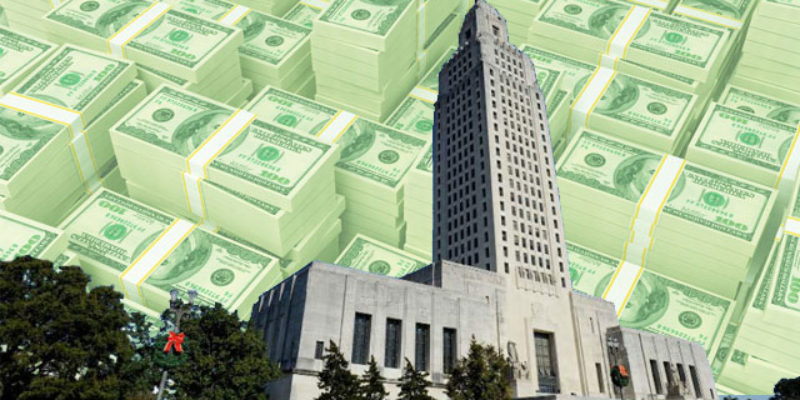Louisiana lawmakers need to pay close attention to the fable of the ants and the grasshopper as they ponder the latest fiscal news and consider their spending decisions.
This week, the state’s Revenue Estimating Conference came up with some rosy numbers, courtesy of the debt-fueled binge by Washington Democrats. The country is paying for it now with accelerating inflation and later with reduced future economic growth, but at the state and local level it has produced a false economy, both by direct cash grants and squeezing more inflated dollars through the economic pipeline, that is here today and will go away tomorrow.
For Louisiana, that equates to around $1.3 billion in unallocated funds directable to Wuhan coronavirus pandemic aid for the next few years, a portion of which can supplement state and local public safety, education, and social service ongoing spending, as well as nearly $850 million more for state spending generated by its own sources in excess of past predictions (after taking off the top $275 million dedicated to liabilities reduction and revenue sharing). In addition, the REC said for this year another $1 billion would be collected in excess of forecasts, although this batch essentially can’t go to operating expenses.
Further, this elevated level may hold for another year. Surplus savings by households accumulated from the firehose of debt financing force feeding money, as the cash had nowhere to go as a result of pandemic measures lingering past their shelf lives that both stifled supply and produced policy that made refusing to work more affordable. Of course, price inflation triggered by these policies will erode the value of these savings as well as increase the cost of government.
No doubt the Democrat Gov. John Bel Edwards Administration will line up large spending hikes in a number of areas in his bid to grow permanently and unnecessarily the size of state government, trying to lock in these levels before the day of reckoning likely in two years’ time after he’s out of office. Already it has talked of significant boosts in education spending.
Many other more prudent/economically-developed states have indicated they will take a more productive path. More than a dozen states’ legislatures plan to embark on tax cutting with their bounties; even free-spending, economically-challenged California by its law will have to return some of its surplus through tax relief. And they can use the federal largesse in its entirety if desired to facilitate this, as the judiciary ruled unconstitutional Democrats’ attempts to bake in spending increases by striking a provision attached to much of this funding that prohibited using such funds to offset tax decreases.
Unfortunately, Louisiana unlikely can benefit from this tactic. It has two huge commitments in the offing – around $750 million in payments to the federal government for flood protection due over the next two years to avoid much higher payouts over the next decade and around $10 billion for unfunded accrued liabilities in the state’s two largest pension funds, although only about $1.5 billion must be paid off by the end of the decade. The one-time boost in revenues ideally can offset the former and a chunk, at least that coming due within the decade, of the latter.
Advertisement
And one recurring spending priority looms larger than any other of its kind, which should provide a perfect landing for unspent pandemic relief. The state depleted, and then began borrowing from the federal government, unemployment insurance trust fund dollars that fortunately it paid off prior to any interest due. But that has left its fund less than halfway below its recommended level of $750 million, and an ill-advised hike in unemployment benefits will strain the system more.
In addition, 0.45 percent of state sales tax rolls off at the end of fiscal year 2025, which at this point equates to about $430 million annually rolling off the books. And between now and then vehicle sales taxes in their entirely will become unavailable for operating expenses, clipping around $400 million annually by FY25 as these become diverted to transportation capital outlays.
That’s the direction for Louisiana to head with this bonus. With tax relief on the way, the lion’s share should go towards paying off the federal government, down the UAL, and forward unemployment trust fund dollars to restore it to a minimally safe level. If anything remains, plenty of capital outlay projects need fulfilling. Little, if any, should go to new spending commitments.
The grasshopper – whose philosophy Edwards largely has emulated – fiddled away his chance to prepare for the future. The ants preserved their resources and when winter came with its reduced output didn’t find themselves overextended and in distress. Committing the extra bucks to known future one-time expenses is the superior strategy for Louisiana to follow.
Advertisement
Advertisement

